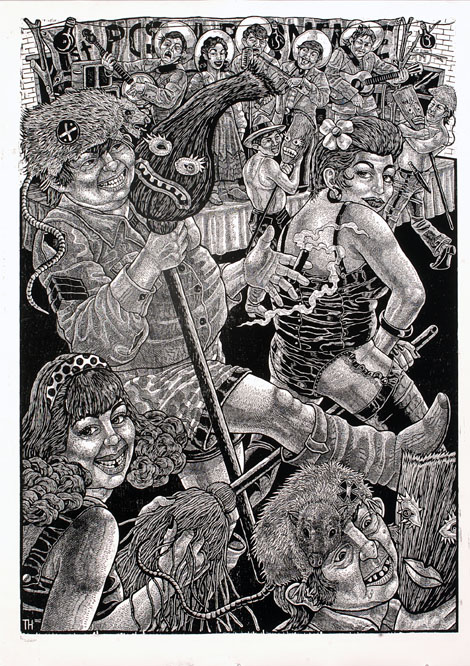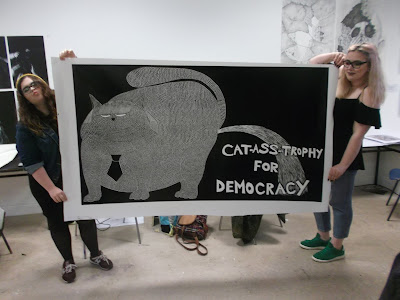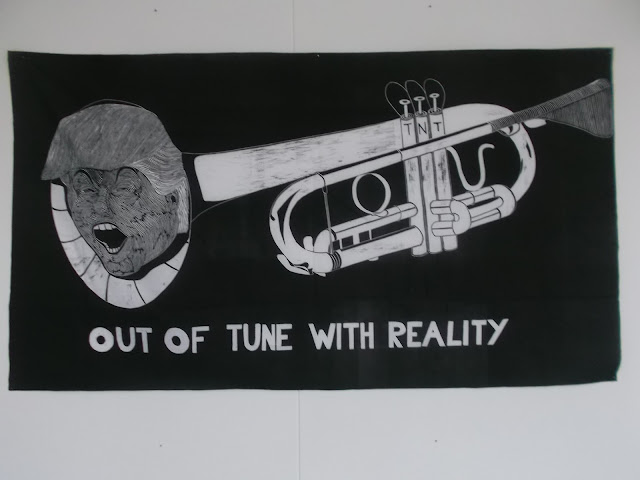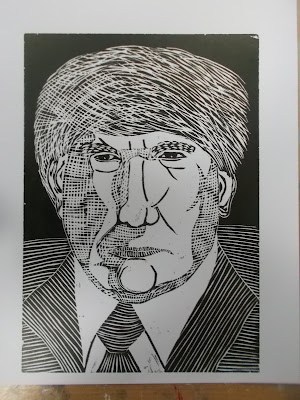"Art and Laughter" by Sheri Klein is a very informative book for the subject I'm dealing with. Between pages 16 and 18 it splits humour different categories and clearly defines all of them. Now it's not just humour I'm working with. Its parody, satire, puns, irony, paradox and dark humour. Below I list the definitions in the book along with my own simplified definitions.
Parody
"Parodies
gently mock art, cultural and historical icons through appropriating and
altering images, and layering them with new meanings” (Page 13).
In
other words, parodies are slightly altered icons which trigger a humorous
response because they portray a different meaning to the original. Often at times we can’t laugh at the original
because it’s too serious or too well respected.
An example of a parody would be the Mona Lisa with a mustache. This evokes a humorous response because it’s
such a famous and respected painting.
Drawing a mustache takes all the seriousness out of it.
Satire
“Visual satire mocks art and life
with zest and fury and asks us to pay attention to social norms, standards,
morals and human foibles. The visual
satirist mimics the knowledge and behaviour of a culture or group to
overemphasize and exaggerate aspects of life and its foibles with the hope of
provoking laughter or a change in attitudes or ways” (page 16).
In
other words, satire uses the enforcement function of humour here in an attempt
to provoke laughter while also making people aware of the errors of our world
and hopefully attempt to correct them through non-violence.
Pun
“A pun can be described as an
image with two or more concurrent meanings resulting in the understanding of
images on more than one level” (page 17).
In
other words, an image or caption with more than one meaning. Eg. I
can’t think of a joke about beavers.
Dam.
The
word dam is related to beavers because they create them in their environment
while damn is also the word we say when we can’t think of something. So the word dam is the source of amusement
here as it carries more than one meaning here.
Irony
“Irony is enabled by using words
or a combination of words and images to express something completely different
from the literal meaning of the word or subject” (Page 18-19).
In
other words, an ironic response is responding with the opposite answer expected
to any given question or statement. For
example, if someone drops a glass and it smashes into shards on the ground and
someone says “well done”, that’s an ironic response. It’s typically use to mock someone or
something.
Paradox
“Paradox is incongruity
achieved through the juxtaposition of images, words and images, techniques,
media and/or ideas, and at first they can seem false, but then we see the
contradictions made apparent and the revealing of something true” (Page 18).
In
other words, it’s a sentence that contradicts itself and at first doesn’t make
sense, however it makes the reader think, leading them to discover some hidden
truth to it.
For
example, Oscar Wilde is famously quoted as saying “I can resist anything but
temptation”.
Other
examples include “The enemy of my enemy is my friend” or “I am nobody” and so
on.
Dark Humour
“Dark humour relies on
the effect of morbidity, absurdity and anarchy.
Dark humour confronts topics such as death, chaos, violence, disasters
and personal crises. It provokes
laughter in the face of tragedy” (Page 19).
In
other words, dark humour allows us to make light of terrible situations we
would normally be traumatised by or deeply affected by such as those listed
above. This kind of humour is often the
source of offence for many people as they feel like there are some things we
shouldn’t joke about. Some artists on
the other hand delight in using this kind of humour to trigger a response from
the audience. Artists listed in this
book include Patty Carroll, Red Grooms, Shag (Josh Agle), Isabel Samaras and
Saul Steinberg.
On
page 19, the book talks about the various techniques which can be used to
trigger a laughter response.
Techniques to Trigger Laughter (Page
19)
Association – Two images put together
giving contrasting effects.
Transposition – Relocating something in
an unusual or new environment.
Transformation – Altering of a form.
Exaggeration – Change or distortion of
a subject.
Disguise – Subtle change or
meaning.
Appropriation – Altering a borrowed
image.
Contradiction – Paradoxical or ironic
compositions.





























